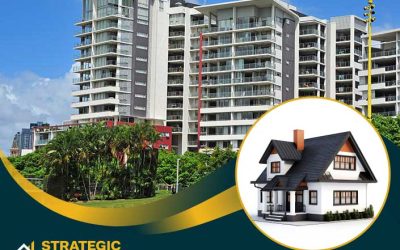
Are you ready to unlock the power of positive properties and achieve financial growth? The world of property investing offers a plethora of opportunities, but one of the most profitable and enticing investment strategies is positive cash flow properties. In this blog post, we will guide you through the ins and outs of this lucrative investment approach, providing you with the knowledge and tools to build a thriving property portfolio.
By the end of this comprehensive guide, you will have a deeper understanding of positive cash flow properties, their key components, and practical strategies to identify high-performing investments. Moreover, we will explore the impact of interest rates, diversification, and tax benefits, as well as the risks and challenges you may encounter. So, let’s embark on this journey towards unlocking cash flow and wealth through positive property investments.
Key Takeaways
- Positive cash flow properties generate rental income that is higher than associated expenses, providing investors with potential for capital gain and supplemental yearly income.
- Optimizing key components such as rental income, property appreciation, and tax benefits can maximize the potential of a profitable investment.
- It is important to be aware of risks & challenges involved in positive cash flow investing while researching local market values & consulting financial professionals for expert advice.
Understanding Positive Cash Flow Properties

Positive cash flow properties, also known as positive cashflow properties, are highly sought after by property investors, as they can supplement yearly income and expand overall wealth. However, it’s important to be aware of potential risks and challenges in this investment strategy, such as market fluctuations and property management. Subsequent sections will provide a deeper understanding of the key elements of positive cash flow and strategies to pinpoint high-yielding cash flow positive properties.
Key Components of Positive Cash Flow
For a comprehensive understanding of positive cash flow property investing, it’s imperative to comprehend the three main elements contributing to this profitable investment strategy:
- Rental income: The money generated from tenants renting your property, and it’s the lifeblood of a positive cash flow investment. The higher the rental income, the more likely your property will generate a positive cash flow.
- Property appreciation: The increase in value of your property over time. This can be influenced by factors such as location, market conditions, and improvements made to the property.
- Tax benefits: Certain tax deductions and incentives that can help reduce your overall tax liability and increase your cash flow.
By considering and optimizing these three elements, you can maximize the potential for positive cash flow in your property investment.
Property appreciation refers to the increase in your property’s value over time, which can lead to capital gain when you decide to sell the property. Tax advantages, such as depreciation and tax deductions, are another essential component that can make your property investment more attainable and contribute to positive cash flow. Comprehending and utilizing these key elements can lay the groundwork for a successful and lucrative property investment strategy.
Positive vs Negative Gearing: A Comparison

The primary advantage of positive gearing is the immediate income it generates, which can be used to build a portfolio or reduce a mortgage. However, this additional income can result in increased taxes. On the other hand, negative gearing offers tax deductions, but it requires sufficient cash flow to cover losses until tax time and can pose challenges in building a property portfolio. It’s important to balance the advantages and disadvantages of each strategy to determine which one best aligns with your investment goals.
Strategies for Identifying High-Performing Positive Cash Flow Properties

Subsequent subsections will examine these strategies in more detail, equipping you with practical tools and insights to navigate the property market and uncover profitable investment opportunities.
Researching Local Property Market Values
Local property market values can have a significant influence on the positive cash flow potential of your investment property. Comprehending and investigating these values is important in assessing the growth and return on investment for your property. When researching local market values, consider factors such as:
- Rental income potential
- Vacancy rates
- Location
- Population growth
- Infrastructure development
- Comparable properties
There are numerous online resources available to assist with your research, such as:
- PropertyValue.com.au
- CoreLogic
- APM Price Finder
- REIWA
- HTAG
Keeping current with market trends and indicators allows you to make well-considered investment decisions that align with your financial goals while minimizing possible risks.
Analyzing Rental Yields and Vacancy Rates
Rental yields and vacancy rates are essential factors to consider when evaluating the profitability of a property. Here are some key points to keep in mind:
- A higher rental yield typically indicates a more profitable investment.
- Lower vacancy rates suggest consistent rental income.
- The rental yield formula is: Rental Yield = (Annual Rental Income / Property Value) x 100.
Generally, a rental yield percentage in property investing is considered to be between 5% and 8%. Evaluating rental yields and vacancy rates enables you to judge the potential profitability of a property and make well-considered decisions about investing in it or not.
The Impact of Interest Rates on Positive Cash Flow Properties

Understanding the relationship between central bank interest rates and private mortgage lending rates is also crucial for property investors. Monitoring interest rate fluctuations and their market impact permits you to make more effective investment decisions and adjust your strategy as needed.
Diversifying Your Investment Portfolio with Multiple Income Properties

Investing in multiple income properties not only helps to spread risk but also creates a consistent source of income, augmenting your overall financial growth. Nevertheless, it’s important to recognize the potential risks and challenges tied to investing in multiple income properties, such as market volatility, tenant turnover, and upkeep costs.
Maximizing Tax Benefits and Non-Cash Deductions

- Depreciation on buildings
- Capital works deductions
- Rental advertising costs
- Interest payments on investment loans
These benefits can help maximize the financial returns on your investment property.
To maximize these benefits and deductions, it’s advisable to consult an accountant who is knowledgeable in investment properties and familiar with the deductions that can be claimed. Utilizing tax benefits and non-cash deductions can boost the profitability of your positive cash flow properties, leading to enhanced financial growth.
Risks and Challenges in Positive Cash Flow Property Investing

Proper property management ensures that rental properties are managed effectively, tenants are appropriately vetted, and rent is collected in a timely manner. This helps to decrease vacancies, reduce turnover costs, and maximize rental income.
Being aware of these risks and challenges enables you to make well-considered decisions and lessen possible pitfalls in your investment journey.
Expert Tips for a Successful Property Investment Strategy
Creating a successful property investment strategy requires careful planning, research, and consultation with financial professionals. Expert advice can provide invaluable guidance and direction, helping you recognize potential opportunities, evaluate risk, and make informed decisions.
Continuous market research is also vital in constructing a successful property investment strategy, as it allows you to identify trends, analyze market conditions, and assess the potential value of properties. Keeping current with market dynamics and seeking advice from financial professionals allows you to develop a strong and effective property investment strategy that aligns with your financial goals.
Summary
In conclusion, positive cash flow property investing offers a plethora of opportunities for financial growth and wealth creation. By understanding the key components of positive cash flow and employing strategic research and analysis, you can identify high-performing properties and maximize your investment returns.
As you venture into the world of positive property investments, remember to diversify your portfolio, consult with financial professionals, and stay informed about market trends and interest rates. With the right approach and dedication, you can unlock the power of positive properties and achieve lasting financial success.
Frequently Asked Questions

What is positive cash flow properties?
Positive cashflow properties are investment properties where yearly profit exceeds yearly expenses (after depreciation and tax deductions). They don’t cost you anything to own, as they actually put money into your pocket each year.
Who is the owner of positive real estate?
Jason Whitton and Sam Saggers are the owners of Positive Real Estate, a company focused on helping investors create passive income and wealth for retirement through property investment.
Who is Sam Saggers?
Sam Saggers is the CEO of Positive Real Estate, a wealth creation and professional services company with over 20 years of real estate industry experience. He has personally invested in a portfolio worth over $10 Million and is described as one of Australia’s leading property minds.
What are the key components of positive cash flow?
The key components of positive cash flow are rental income, property appreciation, and tax advantages.
What is the impact of interest rates on positive cash flow properties?
An increase in interest rates can significantly reduce cash flow from positively geared properties, potentially causing them to become neutral or even negative.













